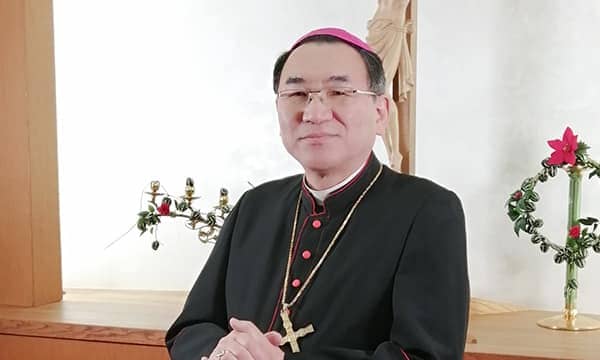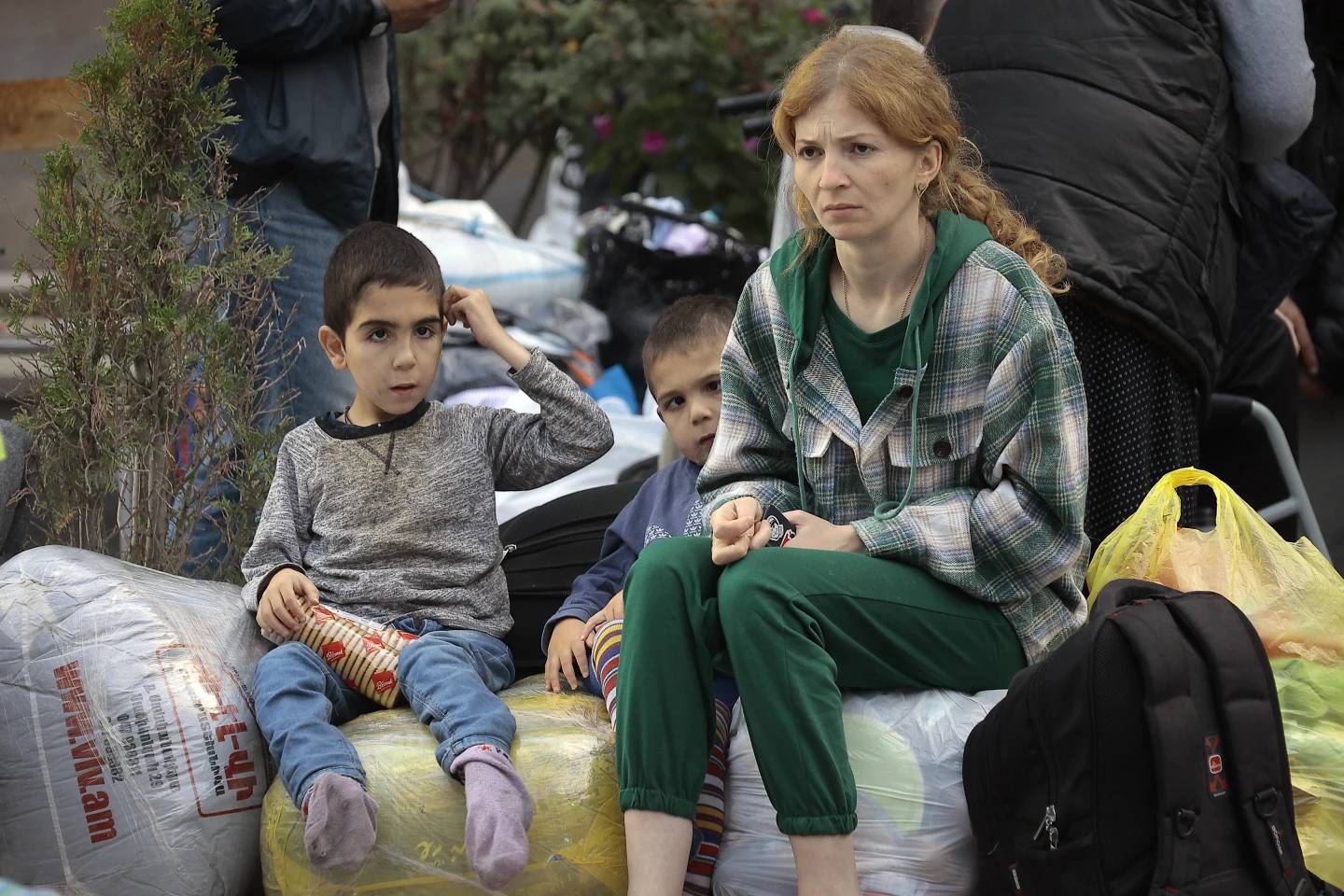SEOUL — South Korea is hardly the first proof of this insight about Pope Francis, and perhaps not the best. Yet midway through the pontiff’s Aug. 13 to 18 trip here, which marks his debut in Asia, it’s once again obvious just how much he’s a “Teflon Pope.”
It’s not that any major controversy is brewing, but that’s precisely the point. There’s material to fuel more than one dispute, but given the force of the pope’s personality, none of it sticks.
So far, Francis has drawn enthusiastic crowds, rapturous press coverage, and swoons from VIPs and ordinary folks alike, from pop culture icons to local Korean nuns.
Several vintage Francis touches have worked their charm, such as taking a budget Kia version of the Popemobile, riding in an ordinary train compartment from one venue to another, and sporting a yellow ribbon to show solidarity with the families of almost 300 young Koreans who died in a recent ferry disaster.
The pope’s message of concern for the poor, as well as reconciliation on the divided Korean peninsula, has also played well.
He’s clearly a hit in the street. Even non-Catholics and people of no religion have snapped up a popular Korean collection of 100 sayings by Francis, in a papal version of the Analects of Confucius.
Kim Young-oh, a Hyundai auto worker who lost his 17-year-old daughter in the April ferry disaster, summed up the sentiment even before the pontiff stopped his Popemobile in a Seoul square on Saturday to share a tearful moment with him.
“I’m not religious,” Kim said, “but Francis seems a really caring person.”
The striking thing is that South Korea actually has a vibrant tradition of protest and a rambunctious political culture. There are several constituencies here which, under other circumstances, might be expected to push back.
Dae-Kwang Choi, for instance, is pastor of Seoul’s Chung Dong First Methodist Church. He said many Korean Evangelicals hold a strong form of stereotypical Protestant objections to the Catholic Church, such as complaints about overemphasis on the Virgin Mary and the papacy.
They’re not thrilled, he said, to see a week-long festival devoted to the pope, and some are irritated about using government funds to subsidize it.
But will they speak out?
“Definitely not,” Choi said. “This pope is too popular.”
From another angle, Musang Beophyeon is a master Buddhist monk who serves as abbot of a 200-person temple in suburban Seoul. He complained about a Saturday ceremony in which Francis beatified 124 Catholic martyrs from the 18th and 19th centuries.
“Many Buddhists risked their lives to save Christians in that time, but now the Church wants to forget this part of the story,” he groused. He charged the celebration amounted to an unwarranted claim of moral superiority.
Has this given him a negative view of the pope?
“Not at all,” he said, pointing out that he’s written a glowing foreword to a Korean book about Francis, saying the simplicity he projects resonates well with Buddhists.
The same point applies to dissident voices within the Catholic fold.
Some in the Korean church criticized a Saturday stop at a Catholic charitable facility called Kkottongnae, founded by a charismatic priest named the Rev. John Oh who’s been dogged over the years by corruption scandals. The center houses 5,000 sick and disabled people, and is seen by detractors as a scam.
Yet after watching the pope so obviously moved there, ignoring the clock as he embraced scores of sick and disabled children, no one really felt like dredging up a debate over the center’s leadership. It was vintage Francis: dealing with a potential controversy by shifting the focus to something more fundamental.
To take another group, families of the shipwreck victims had wanted Francis to press the government over their demand for an independent criminal probe, something a Vatican spokesman flatly said that he wouldn’t do. Yet the pontiff has reached out to the families in so many other ways, including baptizing one of them, they seemed elated rather than disappointed.
Given his magnetism, Francis always seems to get the benefit of the doubt. Friday night, for instance, young people were invited to ask him questions. He utterly ducked the most provocative one, on China, yet still won kudos for his candor.
Perhaps the ultimate proof of his appeal is this: Outside the hotel hosting the media center for the visit, a subtle yet determined pimp has worked the sidewalk each night in an effort to entice visitors to hire a call girl. When he approached me late Friday — for the record, unsuccessfully — I asked if he was aware that people traveling with the pope are lodged there.
Presumably this guy is no fan of Catholic sexual morality, but he still volunteered that he likes Francis because, as he put it, “He doesn’t judge.”
What South Korea illustrates, therefore, is that Francis’ Teflon coating isn’t just a Western or Latin American artifact, but part of his global brand. It may not dissolve the objections some have to Catholicism, but it seems to persuade them the problem isn’t because of the pope — it’s in spite of him.
The Social Gospel’s missionary appeal
The South Korea trip has brought several flashes of Francis’ commitment to the Social Gospel, meaning concern for the poor, promotion of peace, and so on. It’s such a pillar of his papacy that he has argued that the Social Gospel actually should be the heart of the Church’s missionary activity, the Catholic word for which is “evangelization.”
In other contexts, that might seem merely a beguiling theological assertion. In South Korea, however, it’s fairly close to an empirical observation about Catholicism’s recent boom.
The growth is well-documented; so strong, in fact, that two years ago a renowned Catholic writer dubbed South Korea the “Asian Tiger of the Church.”
In 2008, the church’s share of the Korean population broke the 10-percent threshold, and is increasing at an annual clip of about 3 percent. In 1950, the country’s total Catholic population was just 156,000, but by 1990, it had reached 2.4 million. Today, it stands at 5.4 million.
Most Catholic parishes in South Korea attract 200 to 400 adult converts per year, and the church also adds 130 to 150 new priests annually. South Korea now has almost 5,000 Catholic priests, two-thirds of whom are under 40.
No doubt, there are multiple factors fueling the surge.
For one thing, kinship ties are all-important in South Korea, so when one family member converts, there’s often a strong tug for the rest. (It’s telling that there are only 272 family names in the entire country, of which varieties of just five – Kim, Lee, Park, Choe, and Jeong – account for 90 percent. In other words, pretty much everyone is related.)
Strong lay leadership also plays a role, as does the legacy of martyrdom. Some observers believe that what looks like Catholic growth is actually part of a broader religious stirring in South Korea, a rising tide that’s lifting all boats.
Beophyeon, the Buddhist monk cited above, says Buddhism is posting gains and that attendance is up at his own congregation.
Over and over again, however, observers say an undeniable ingredient in the missionary success of Catholicism in South Korea has been its social engagement.
The explosion of Protestantism came in the 1970s and 80s, while the Catholic boom followed in the 1990s and 2000s. That period coincided with the country’s transition from military rule to democracy, a process in which the Catholic Church played a pivotal role.
Dissident leader Kim Dae-jung, who was once sentenced to death by the military and later served as South Korea’s president from 1998 to 2003, earning a reputation as the “Nelson Mandela of Asia,” drew heavily on his Catholic beliefs and represents a national tradition of Catholic lay activism.
Takahiro Suzuki, a Japanese Protestant author who wrote a 2013 book on the expansion of Christianity in Korea, says Catholicism’s social reputation has been key to its expansion. Among other pivot points, he cites a moment in 1995 when the church agreed to host a workers’ protest outside Seoul’s Myeongdong Cathedral.
More recently, the Catholic Church has lent support to families of the shipwreck victims who are currently protesting what they see as an inadequate government response.
Choi, the Methodist pastor, agrees that all this has helped Catholicism win hearts and minds.
“The Catholic Church’s social commitment has made it deeply respected,” he said. “They’ve even gotten some Protestants because of it.”
South Korean Catholicism is also known for cordial relations with Korea’s Buddhist community, distinguishing it from the sometimes more pugnacious line of Evangelical and Pentecostal Protestants.
In a culture that prizes social harmony, that, too, is a selling point.
All this makes South Korea a premier venue for Francis to make his case that the social gospel and missionary endeavors are not only not at odds, but two sides of the same coin. If anyone doubts the point, he might say, Korea’s got the numbers to prove it.
A technological glitch
One storyline that has aroused interest is that this is the closest a pope has been in a while to China, and on Thursday Francis became the first pontiff ever to fly through Chinese airspace. His one-line telegram to President Xi Jinping, invoking “divine blessings” on China, probably sparked more media commentary than any single papal sentence since “Who am I to judge?”
China and the Vatican do not have diplomatic relations, so Francis’ proximity and small gesture have excited some about the prospect of a breakthrough, though observers with long memories remain skeptical.
As it turns out, however, technological glitches don’t spare even a Teflon pope.
The Rev. Federico Lombardi, the Vatican spokesman, said Friday night that earlier in the day the Chinese embassy in Rome had called the Vatican to ask for a copy of the telegram because, while they’d read all about it in the media, it had apparently never reached them. According to Lombardi, there may have been a technical problem in sending the message from the papal plane, caused by some breakdown in communication with the control tower during the flight.
In any event, Lombardi said, the message has now arrived.
Francis in English
The South Korea trip also marks the debut of Francis as a public orator in English. He’s given three talks in English so far, which is the most common second language in most of Asia, and is scheduled to give one more on Sunday.
He seemed to grow in his comfort level as the trip went on. By the end of his Mass on Friday at a soccer stadium in Daejeon, about 90 miles south of Seoul, he had his English cadence sufficiently down to try to sell a line in which he called on Koreans to work together to respond to the Sewol ferry tragedy.
When he came to the key phrase “work together,” the pontiff made a gesture with his right hand and raised his voice, clearly emphasizing that the point was important to him.
Yet when Francis has felt the need to go off-script, so far he’s used Italian. As is often the case, some of his best lines have come in those impromptu moments.
On Thursday night, he added a flourish against clericalism in a speech to Korean bishops. On Friday, he responded to questions put to him by Asian youth, including a Korean who asked about the division of the peninsula. Francis said it’s important for Koreans to forgive since they’re members of one family, invoking the Biblical story of Joseph forgiving his brothers.
In an unplanned visit Friday night to the Jesuit community at Seoul’s Sogang University, Francis reiterated his vision of the Catholic Church as a “field hospital” healing the wounds of humanity. He urged the Jesuits, and priests in general, not to “castigate” people but to “console” them.
The take-away for Americans looking forward to the pope’s September 2015 trip to the United States is that he’ll probably be just fine reading his texts, and English-speakers will have no problem understanding him. But if you want the good stuff, be prepared for Spanish or Italian.
A pro-life pope
Ever since Francis told interviewers last year that it’s not necessary for him to speak regularly about issues such as abortion, homosexuality, and contraception, because the Church’s positions are well known, there’s been a question mark in some circles about the depth of his commitment to the pro-life cause.
If it weren’t clear already that Francis is actually robustly pro-life, the South Korea outing brought a couple of reminders.
In his homily Friday morning in Daejeon, Francis ticked off a series of threats he sees, including a “culture of death which devalues the image of God of life, and violates the dignity of every man, woman, and child.”
The phrase “culture of death” is linked in the Catholic mind to the late Pope John Paul II, now Pope St. John Paul, and the pro-life battles waged during his papacy. By inserting it into his public rhetoric, Francis associated himself with that agenda.
On Saturday afternoon, Francis added a stop at a symbolic “cemetery for aborted children” located in a field behind the charitable facility he visited at Kkottongnae. The field is dotted with white crosses, as well as a statue of the Holy Family – Joseph, Mary, and Jesus as a child.
The stop at the memorial was so brief that it wasn’t carried on the live video feed, but his presence nevertheless seemed to make a statement.
Tug of Korean martyrs
Francis celebrated a Mass in Seoul’s Gwanghwamun Plaza on Saturday to beatify 124 Korean martyrs. The event summed up two key themes for him: the realities of contemporary martyrdom, especially suffering Christians in places such as Iraq, and the role of laity in the Church.
The original founders of Catholicism in Korea were not priests or foreign missionaries, but laity who discovered the faith in China and brought it home. Francis said on Saturday that their story reflects the “dignity and the beauty of the vocation of the laity.”
Since Benedict XVI, popes generally don’t celebrate beatification ceremonies, reserving their personal involvement for canonization, the formal act of declaring someone a saint. Beatification is the next-to-last stage, and recent practice has been for the service to be led by the prefect of the Vatican’s Congregation for the Causes of Saints. (Last year Francis sent a video message to an especially large beatification ceremony in Spain.)
In this case, it was natural for Francis to lead the ceremony because he was in town. It’s hard not to think, however, that he also felt the tug of these new “blesseds” in a special way.

















